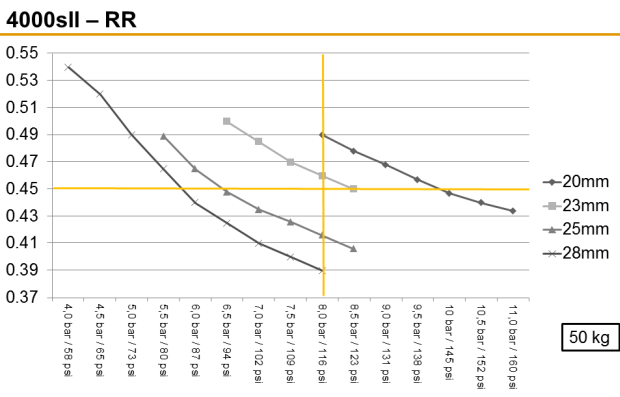Epic-o wrote:
The main issue about what you describe is what I like to call "energy path". The bouncing of the rider is induced by the pedalling loads but it's a movement in the vertical direction. Changing the stiffness of the tire you can modify how severe is that bouncing but I don't see an "energy path" that allows to recover some of that energy for propulsion purposes because the horizontal and vertical movement of the bike are pretty much completely decoupled.
The role of both rolling resistance moment and slip force on what it has been called Crr may not seem obvious because slip is not very common in typical road cycling situation. If you ride your CX bike on ice (something similar to increasing tire pressure a lot) it's more obvious, you can identify the two mechanisms that dissipates power: 1) Rolling resistance moment and 2) the product of slip force and wheel radius, a moment that also tries to decelerate the wheel. In that case, a traditional definition of Crr wouldn't be sufficient to capture total dissipation
I don't think you're following what I'm saying...I would suggest buying this ASTM paper and taking a look at it:
http://www.astm.org/.../PAGES/STP34599S.htm Quote:
Abstract
A linear model for evaluating the influence of road roughness on total vehicular rolling resistance is presented. This model considers rolling resistance to be the result of three energy dissipation mechanisms:
(a) smooth-surface rolling losses,
(b) energy dissipation in the tire due to road roughness, and
(c) losses in the suspension system due to relative motion between sprung and unsprung mass.
The first of these mechanisms is completely dependent on the properties of the tire, specifically, hysteretic losses accrued from tire deformation during rolling. The other mechanisms are dependent on road profile, vehicle velocity, and vehicle parameters, as well as tire properties.
Calculation of losses due to rolling resistance are made by means of a quarter-car model to evaluate the relative magnitudes of the various mechanisms. The results obtained indicate that for rough road surfaces, the losses due to the roughness-related mechanisms are comparable to those arising from smooth-surface hysteretic losses.
http://bikeblather.blogspot.com/


